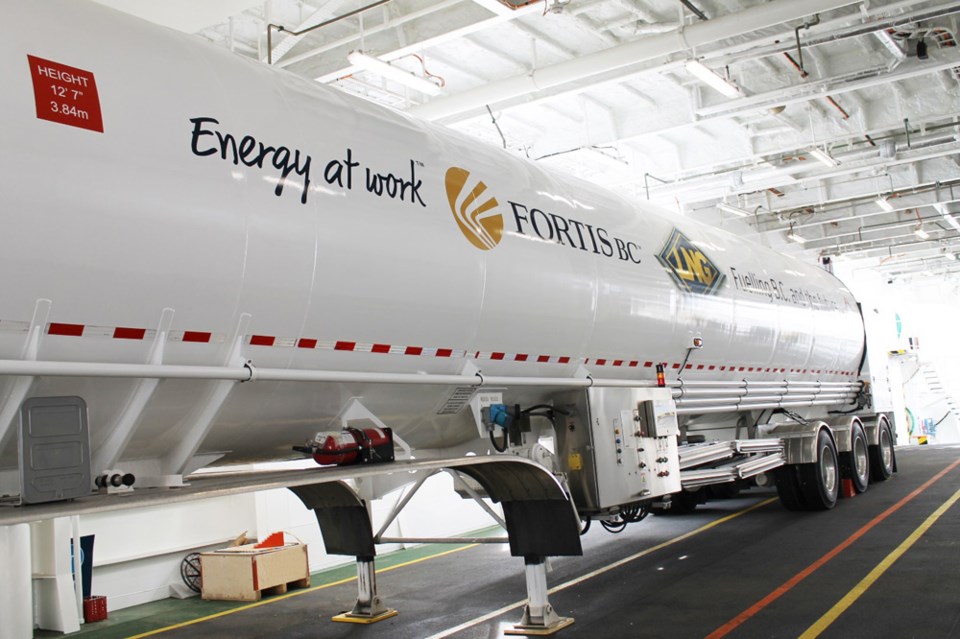Recently, British Columbia released its revised Greenhouse Gas (GHG) emissions legislation for the next three decades.
To meet their targets, government, business and citizens must re-examine their use of energy to understand their environmental impact and adapt their usage appropriately. Companies like FortisBC have a similar obligation to evolve their offerings to help its customers meet the needs of a low-carbon energy landscape.
Over half of all B.C. homes are heated by natural gas. At roughly a third of the cost of heating through electricity, over 20,000 homes and businesses chose to connect to natural gas in 2017. However, despite being a relatively clean burning fuel, critics still note that the use of natural gas comes at a price in the form of GHG emissions.
More gas providers are finding ways to offer customers the best of both worlds by decarbonizing their natural gas supply. British Columbia has led the way in the development of Renewable Natural Gas (RNG) — a carbon-free biogas developed from organic waste.
Renewable Natural Gas blends seamlessly with conventional natural gas and provides the same reliability and efficiency. In B.C., customers can request between five and 100 per cent RNG for their use, and FortisBC will add the appropriate amount of RNG into their infrastructure, displacing the equivalent amount of natural gas with an emission-free gas.
Currently, 9,600 homes and businesses are participating in FortisBC’s RNG program, and interest continues to intensify.
Other technologies are also being explored that can assist in further lowering the carbon intensity of natural gas. For example, blending hydrogen into the natural gas stream shows significant potential. Like RNG, hydrogen gas is carbon-free while carrying energy potential comparable to many fossil fuels.
While hydrogen faces several economic and technical challenges as a mainstream energy source, adding hydrogen to the natural gas stream may be a step in the right direction. Using existing infrastructure, hydrogen could replace up to 15 per cent of the existing natural gas stream without any infrastructure or equipment modification.
Utilities and gas companies are also expanding the use of natural gas beyond the home and into the transportation sector. There are increasing instances of commercial vehicle fleets and public buses switching from diesel or gasoline to compressed natural gas (CNG), including over 100 new CNG buses in Surrey recently announced by TransLink. Citing quieter operation and a 20 to 30 per cent GHG reduction at roughly half the price of traditional fuels has made it an easy choice for many.
Whereas LNG shipments overseas have become commonplace, LNG can be used effectively as a transportation fuel as well. Of particular importance is the role that LNG is set to assume as a more prominent maritime fuel for large transport ships.
Earlier this year, the International Maritime Organization adopted a new strategy on the aggressive reduction of GHG emissions from ships with a target of halving total annual emissions by 2050.
Liquefied natural gas offers up to a 25 per cent reduction in GHG emissions versus bunker oil — a common current maritime fuel. Here in British Columbia, groundbreaking strides have been made — including the conversion of five of the province’s own coastal ferries switching to LNG.
According to the International Energy Agency, global energy needs will increase by 30 per cent between today and 2040. This is the equivalent of adding another China and India to today’s global demand. While many exciting advancements in the world of renewable power will help meet some of this need, the world will likely need to lean upon a wide range of energy alternatives moving forward.
British Columbia’s 2016 Climate Leadership Plan recognized the role of natural gas as the cleanest burning fuel presenting “an opportunity to shift global economies off GHG-intensive fuels like coal and oil to reduce worldwide emissions.” This remains true today and, for energy to remain reliable and affordable, existing energy infrastructure can be leveraged while focusing innovation on economic and environmental performance.
This is not to say that the status quo is good enough — there is a need to evolve. Finding ways to improve the performance of established energy sources to be more efficient and cleaner that enable citizens to continue to use them cost-effectively is vital.
Greenhouse gases are a global issue without any single jurisdiction holding responsibility. It is up to every country, province and city to both do its part and help enable others to do the same. A low carbon energy future must be a future that is shared by everyone, or it will not be shared by anyone at all.



